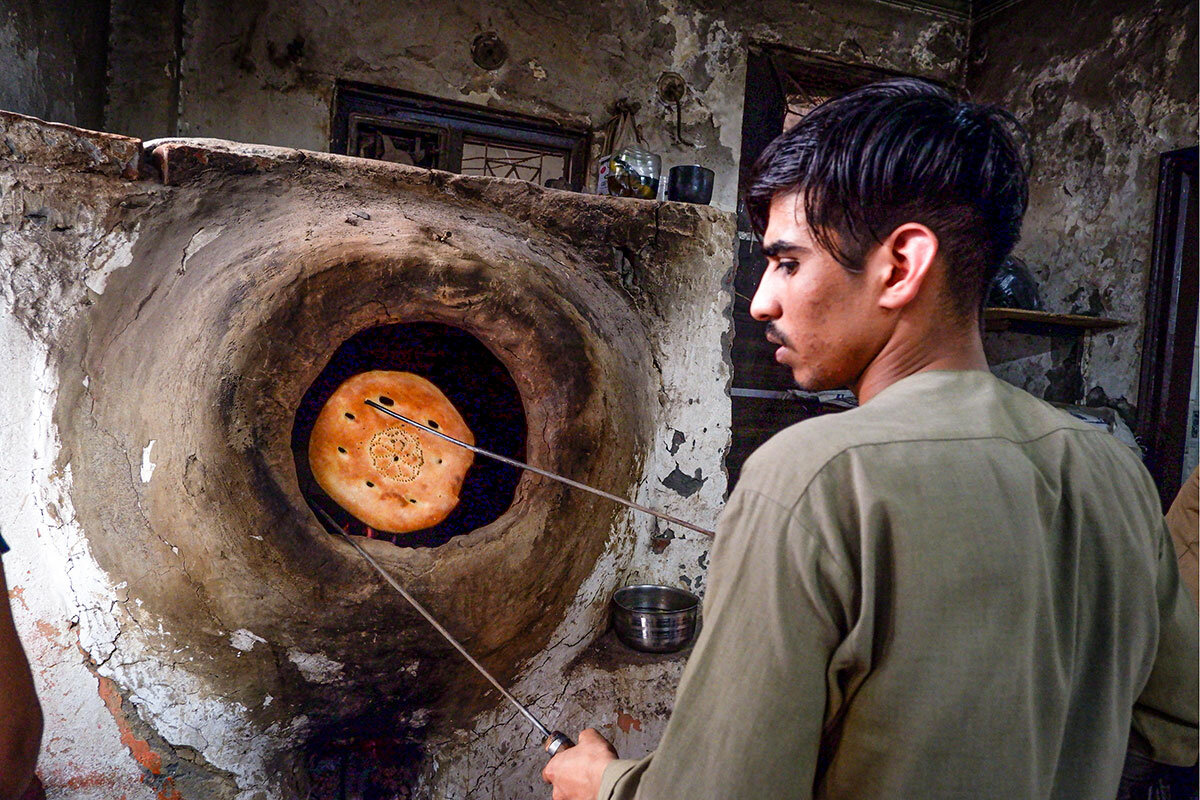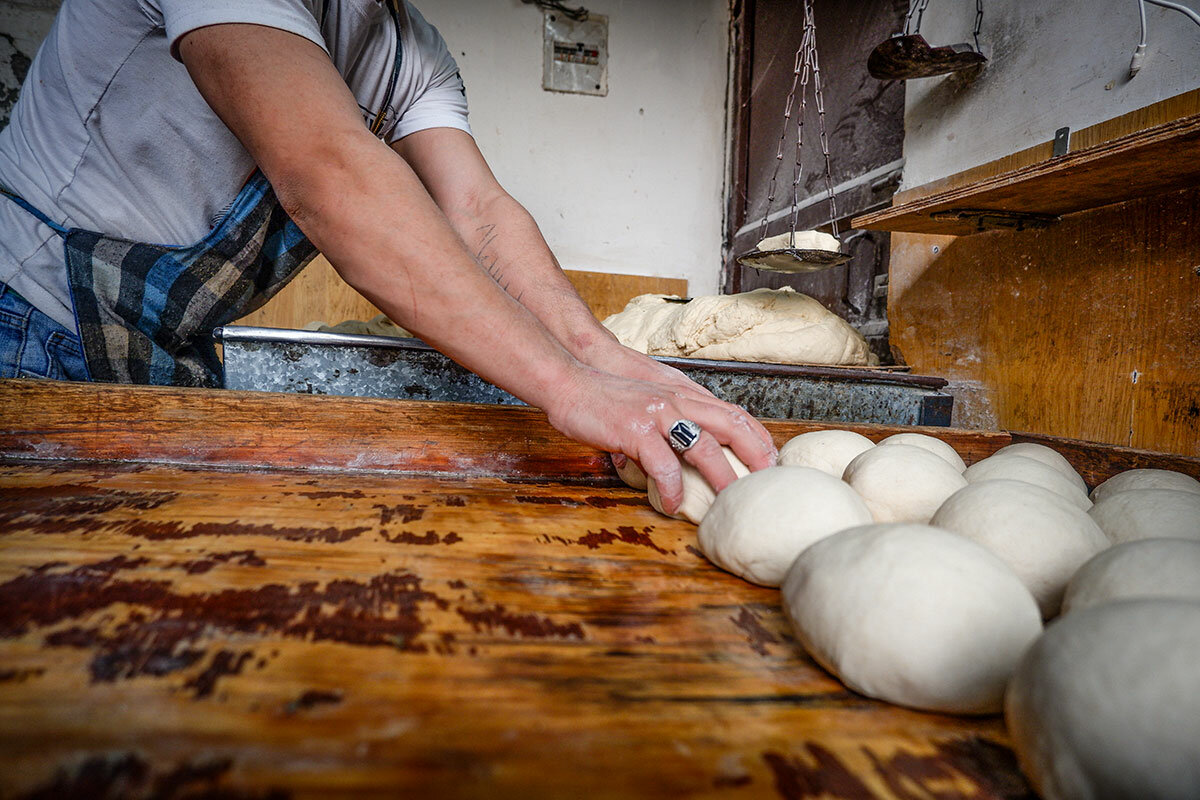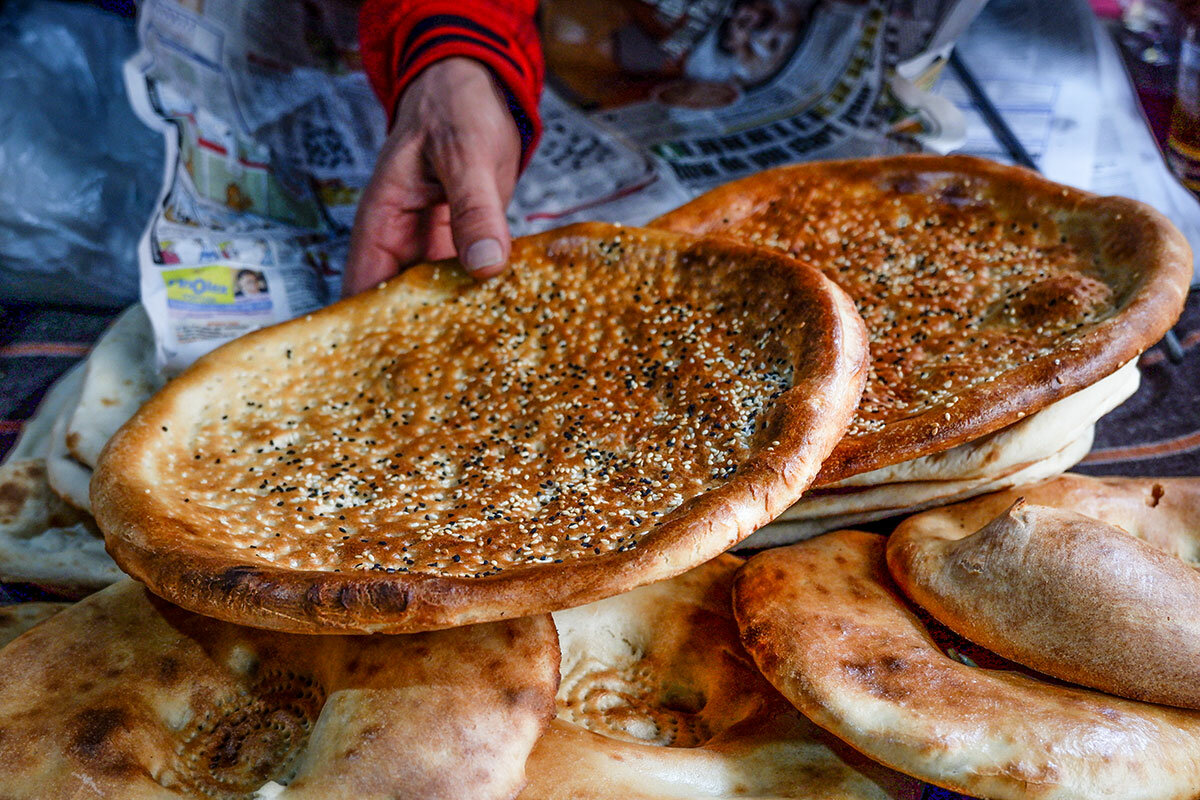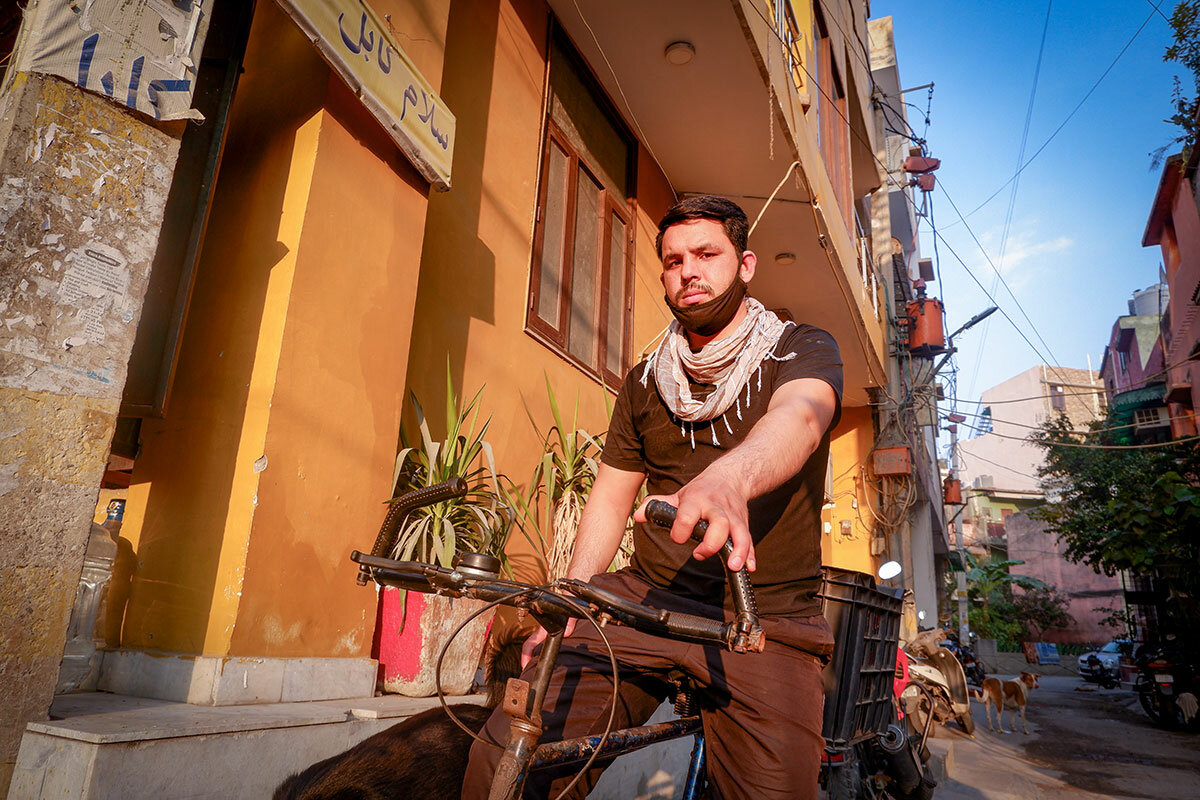In Pictures: A taste of Afghanistan helps these bakers find home in India
Loading...
| Delhi, India
For Najibullah, the birds act as his alarm clock. As soon as the chirping starts, he leaves his apartment for the small bakery shop in the Lajpat Nagar area of south Delhi. He does not care about the weather or the time, but trusts the birds.
He and three co-workers, Wali Khiri, Shahrukh, and Niamatullah, have been working in the shop for the last seven years. They are among the many Afghan refugees to seek safety in India. Since the late 1990s, Afghan naanwais (makers and sellers of naan, or bread) have been plying their trade in India.
For the four young men, bread-making starts at 7 a.m. and goes until 8 p.m., with small breaks in between. They mix wheat flour with water, yeast, salt, and sugar and set it aside. After this, dough balls are made and weighed so that each one is the same size. The balls are then flattened and kept under a cloth for the yeast to do its work. Then the rounds are shaped by hand, imprinted with a decorative pattern, and sprinkled with water and sesame seeds before going into the tandoor, or clay oven. The men spend the time chatting and listening to Wali Khiri’s jokes – they say he has a great sense of humor.
Why We Wrote This
Finding asylum is only one step of a refugee’s journey. These bakers brought industrious spirits and a taste of Afghanistan with them to India. Both have helped them fortify a sense of home.
Afghan naan is different in shape, texture, and taste from Indian varieties. While the main ingredient – wheat flour – is the same, Afghan bakers hand-shape the dough, rather than rolling it out, and their use of a tandoor results in large, pillowy rounds. The bread is enjoyed alongside curries at meals and eaten plain or topped with butter as a snack throughout the day. It is eaten by not only Afghans, but also by Iraqis, Sudanese, and Kashmiris, and now by local Indian customers, too.
According to Wali Khiri, they are able to sell 500 loaves a day and are doing decent business. After Afghanistan was retaken by the Taliban in 2021, Afghans who had traveled to India for medical treatment or jobs went home, which affected sales. “We would otherwise sell 1,500 breads a day,” he says.
The bakers also sell to small food stalls and local restaurants, with Niamatullah making the deliveries on his bicycle.
Najibullah says they have no plans to go back to Afghanistan. When asked if they miss their home, he says with a smile, “This is our home now.”












